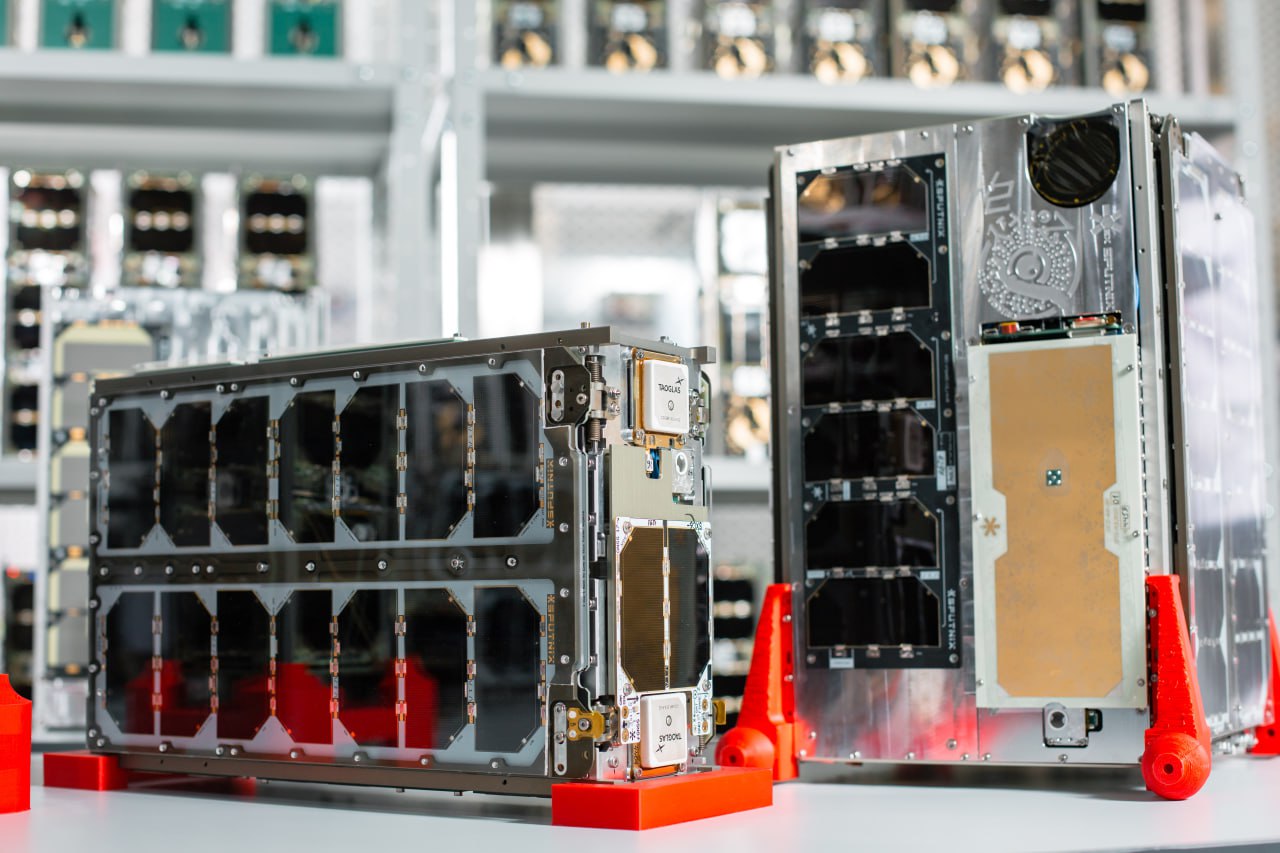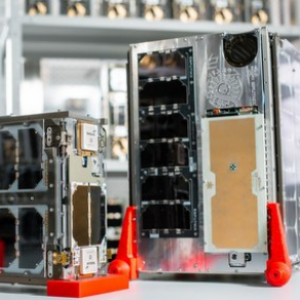Samara University and private space company SPUTNIX (a part of Sitronics Group) have created a nanosatellite with the record-breaking keen hyperspectral sight allowing to see from space the things on the surface of the Earth that are not possible to be seen with the help of the common optics. The hyperspectral sight allows to see the world in the multichannel spectral reflection and help to more efficiently conduct environmental monitoring, watch the condition of forests and crops, follow the origination of forest fires and perform other tasks revealing unseen for a human characteristics and features of the watched objects. It is planned to launch the space vehicle into space in the end of 2024.

The record-breaking nanosatellite is a six-unit space vehicle based on the nanosatellite platform worked out by the engineers of the space company SPUTNIX. The vehicle is already assembled, the integration of the useful payload is completed, the satellite has undergone functional tests and is waiting for the pre-flight preparation. The compact hyperspectrometer created at Samara University is installed in the satellite. It has an extremely high resolution for an instrument of this class – 7 meters per pixel. This exceeds the parameters of numerous much bigger space vehicles for hyperspectral monitoring of the Earth, both Russian and foreign. No nanosatellites with such keen hyperspectral sight have been created in Russia before.
As Roman Skidanov, Doctor of Physics and Mathematics, Professor of the Department of Technical Cybernetics of Samara University, said, “The scientists of our University worked out and assembled the compact high space resolution hyperspectrometer – just 7 meters per pixel. This can be rightly named the record-breaking parameter for such a compact instrument, and this is approximately tens of times higher than a similar parameter of the first domestic hyperspectrometer for nanosatellites, that had been also worked out at our University and successfully tried in space. The space resolution of the hyperspectral instruments and respectively the amounts and quality of transmitted hyperspectral data are often many times worse in case of many big satellites weighing hundreds and thousands kilograms than of this little one. If we are speaking about nanosatellites equipped with a hyperspectrometer, there have been none in Russia with similar or better hyperspectral “eyesight” yet”.
The hyperspectrometer is equipped with a powerful domestically manufactured long-focus lens and is intended for operating in the visible and near infrared range (the so called VNIR range, from 400 to 1,000 nm). The number of spectral channels is from 150 to 300. The length of the hyperspectrometer with the lens is only about 30 cm. The instrument has already passed bench tests in the SPUTNIX laboratory and is ready to work on the orbit.
The project is implemented with the support of the Innovation Promotion Fund as part of the Space-Pi scientific and educational project, the Planet Keeper on Duty Program. It is planned that the scientists from Samara University will teach teams of Russian schoolchildren the fundamentals of hyperspectral images’ analysis and processing basing on data transmitted from the orbit by the nanosatellite with the hyperspectrometer.
Vladislav Ivanenko, Director General of SPUTNIX, emphasized that “We are interested in this project not only from the point of view of supporting the development of the aerospace education but also the very prospect of creating the space vehicle with the new hyperspectral imaging system. The new in the global sense as there have never been such a super-sensitive system integrated with a CubeSat tried on the orbit. This may open new opportunities for developing the private space sector, in which we are interested ourselves, first of all as the leaders of this market”.
As Vladislav Ivanenko noted, in 2023, the private space company SPUTNIX created over 100 space vehicles, part of which were sent to the orbit during this year and replenished the private Russian group of satellites for remote sounding of the Earth and automatic identification of the Sitronics Group vessels.
About the benefits of hyperspectral sight
According to Professor Roman Skidanov, it will be possible to solve a bigger number of complex tasks with the help of the new hyperspectrometer for nanosatellites, getting more exact data about the objects on the surface of the Earth. The new instrument will be able, for example, to follow the condition of crops more qualitatively and exactly, calculate vegetative indices used for solving smart agriculture tasks and reveal the plants’ problems and stress from space.
The vegetative indices are calculated based on spectral data and show various parameters and features of plants required by agricultural producers for the proper care of crops. Depending on their condition, the amounts of vitamins and moisture, temperature of the environment and other factors, plants differently absorb and reflect electromagnetic waves in different ranges, different specters.
Comparing this data in a single complex with the help of hyperspectral imaging, it is possible to assess the condition of this or that crop remotely, promptly and more exactly, without sending selectively for laboratory analyses separate plants or soil samples. For example, it is possible using the hyperspectral data to determine sections of winter crops with the highest green mass, big amounts of chlorophyll find the level of moisture reserves in plants and forecast future crop yields.
The hyperspectrometer also helps to assess the physiological condition of plants from the point of view of stress. It is known that plants can also be under stress brought about by unfavorable phenomena – drought or excess moisture, strong wind, temperature drops, sudden cold spell, attacks by pests. Metabolical changes take place in plants because of stress, and it is possible to find them out from space with the help of the hyperspectrometer.
For reference:
Samara University (higher educational establishment, participant of the Science and Universities national project) is one of the world leaders in photonics. Over 40 years ago, the school of computer optics and image processing was set up in the higher educational establishment and has been operating successfully since then supervised by Victor Soifer, academician of the Russian Academy of Sciences, President of Samara University. The scientists of the University worked out innovative diffractive optics which is applied in various sectors – space, medicine, agriculture.
SPUTNIX (a part of Sitronics Group) is a Russian private space company specializing in developing high-tech satellite components and technologies for small-sized space vehicles as well as services based on them. We are speaking about super-compact satellites, high and super-high resolution vehicles for optical and radar remote sounding of the Earth of high and super-high resolution and all-weather imaging.
Sitronics Group is a Russian IT company implementing digital projects for business and the state, it is engaged in the implementation of complex solutions for smart cities, security and transport, digitalization of the strategic sectors of the economy, shipping, marine navigation, it produces IT equipment under its own brand, develops IoT systems and software.
Space-Pi (“Space π”) is a scientific and educational project for the development and manufacture of small-sized space vehicles in the CubeSat format based on domestic satellite platforms with the purpose of formation of a group of about 100 CubeSats on the orbit within several years to create the infrastructure to engage schoolchildren in scientific-technical creative work in the field of space technologies.
